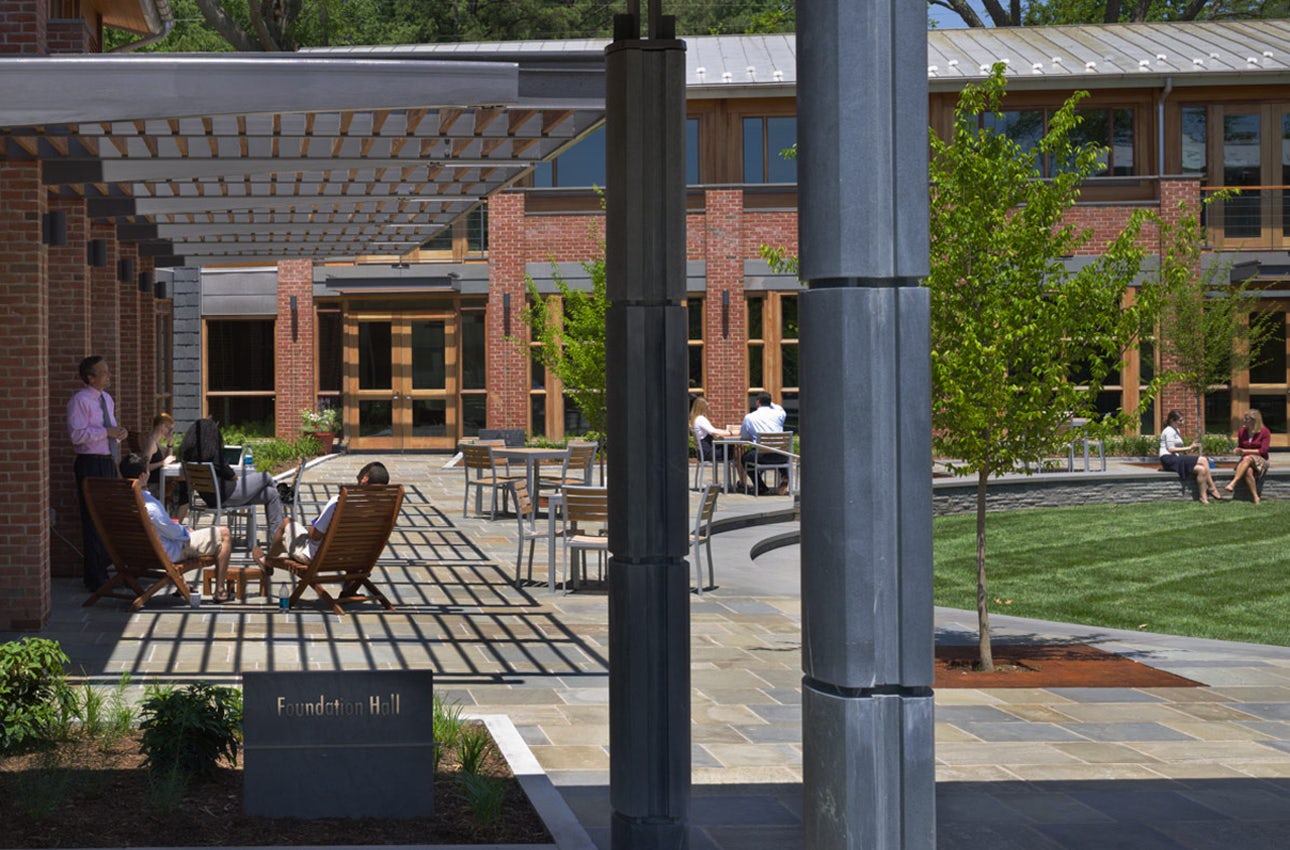A new student union can mark and embody a genuine turning point for a campus. It can synthesize the hopes and aspirations for an institution; it can serve as both a needed symbol of an ambitious future and a real sign of progress in defining a dynamic center of campus life.
Most union projects strive to make a place, and a way, for faculty, staff, and students to continue the conversation started in the classroom – and to gather together as a community in a variety of settings. These key themes below allow our student centers to best serve their campus communities.
Developing Community
A successful student union creates a vital, active, and useful place for student interaction and development. Best located in very the heart of the campus, the compelling passages and memorable spaces of the union building shape a common and unifying experience even though specific programs included in these buildings are purposefully mixed.
The spaces of a student center should range from the intimate scale of an individual corner or a small meeting room to the community scale of a bustling dining hall. Weaving these spaces together requires both logic and art, creating comfortable relationships and an accommodating ease of use. Carefully organized spaces and programs lead naturally to inclusive participation in the larger web of activity within the building making the student center come alive.
Meeting Spaces
With multiple groups using a meeting space throughout the day for a variety of purposes, flexibility is critical. Intended for frequent set up and rearrangement, meeting rooms can be equipped with the technology and furnishings to make transitions smooth and easy.
Technology that is seamlessly integrated into a room makes media for formal and informal presentations accessible and intuitive. Easy access to food service allows these spaces to host popular luncheon meetings. Artfully managing service issues, in concert with a careful attention to furniture selection and configuration, will minimize staff time devoted to preparing and re-configuring spaces while maximizing their utility.
Accessible Dining
A variety of dining options enlivens the use of the union – from casual, ready-made “grab-and-go” to formal, specially prepared meals for events. Options that suit different personalities, eating needs, and payment options make all feel comfortable, welcome, and engaged in the life of the campus.
Skillful interior design shapes dining environments that comfortably host a variety of personalities and experiences, allowing different needs at different times to find their place within the building. Color, texture, surface and furnishing all create the varied moods of dining throughout the building – from calm and private for reading and study in a quiet café to the energy and openness of enjoying a meal with a large group of friends in a spacious dining room.
Supporting Student Leaders
When major club and student organization space is included in student centers, on any day of the week, you will find your campus leaders in one building interacting with each other. These particular students are often recognized as the heart and soul of student life. Thus, colleges and universities are now devoting more thought to how student centers can support these students’ work.
Supporting student leaders with dedicated space, technology, and resources improves the quality of broader student activities on campus and provides an effective training ground for the future leaders. Housing them in a common space with shared office resources creates opportunities for meaningful group interaction, effective collaboration, and the chance exposure to a diversity of interests and passions.
To learn more about design considerations for student centers, read our Student Center Design Resource Book.

